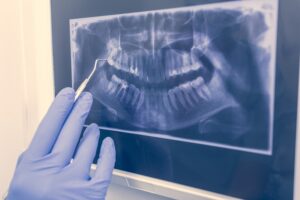
Wisdom teeth removal can seem like a daunting process. But, in reality, it’s a relatively common procedure that millions of people undergo every year. As with any dental or surgical process, there may be some postoperative discomfort and pain. However, with a little pre-planning and postoperative care, patients can help themselves recover from the procedure quickly. In this blog, we’ll discuss what to expect during the wisdom teeth removal process, how to prepare for the procedure, and tips for a smooth recovery.
Understanding the Wisdom Teeth Removal Process
The wisdom teeth removal process is performed by a dental surgeon or oral surgeon. The surgeon will administer anesthesia to the patient before making incisions in the gums to expose the teeth. If the teeth are impacted or have not erupted above the gum line, the surgeon will need to remove bone to access the teeth. Once the teeth are fully exposed, the surgeon will use specialized instruments to loosen the teeth and remove them. After the teeth have been removed, patients will typically have stitches placed, which will dissolve on their own in a few days.
Tips for Preparing for Your Wisdom Teeth Removal
To prepare for your wisdom teeth removal, it’s essential to follow any instructions provided by your surgeon. If you’re undergoing general anesthesia, you’ll need to fast before the procedure. Make sure you’ve arranged for transportation to and from your appointment and have someone monitor you for the first few hours after the procedure. You should also stock up on soft foods and ask your surgeon about any medications or supplements you can take before and after the surgery.
Postoperative Care for Wisdom Teeth Removal
The first few days following wisdom teeth removal can be uncomfortable, but there are things you can do to maximize your comfort. You’ll need to rest for the first day and avoid any strenuous activity for several days afterward. Apply ice to your face for 15 minutes at a time, and use pain medication as prescribed. It’s also important to rinse your mouth with salt water several times per day to keep the extraction site clean.
Foods to Eat and Avoid After Wisdom Teeth Removal
After wisdom teeth removal, you’ll want to stick to a soft diet to avoid irritating the extraction site. Some great options include smoothies, soup, mashed potatoes, and scrambled eggs. Avoid hard or crunchy foods that could dislodge the extraction site or interfere with healing. You should also avoid drinking from straws, as the suction could disrupt healing and cause a painful condition called dry socket.
When to Follow Up with Your Surgeon
Most people are able to return to their normal activities within a week of wisdom teeth removal. However, it’s important to follow up with your surgeon, especially if you have any issues, such as severe pain, swelling, or bleeding. Follow any postoperative instructions from your surgeon to ensure the best possible outcome.
Wisdom teeth removal doesn’t have to be scary or overwhelming. With the right preparation and postoperative care, you can help ensure a smooth and comfortable recovery. Remember to follow your surgeon’s instructions, rest, eat soft foods, and keep the extraction site clean to maximize your comfort and healing. And, if you have any concerns during your recovery, don’t hesitate to contact your surgeon for advice and guidance. With a little patience and care, you’ll be back to your normal routine in no time!
